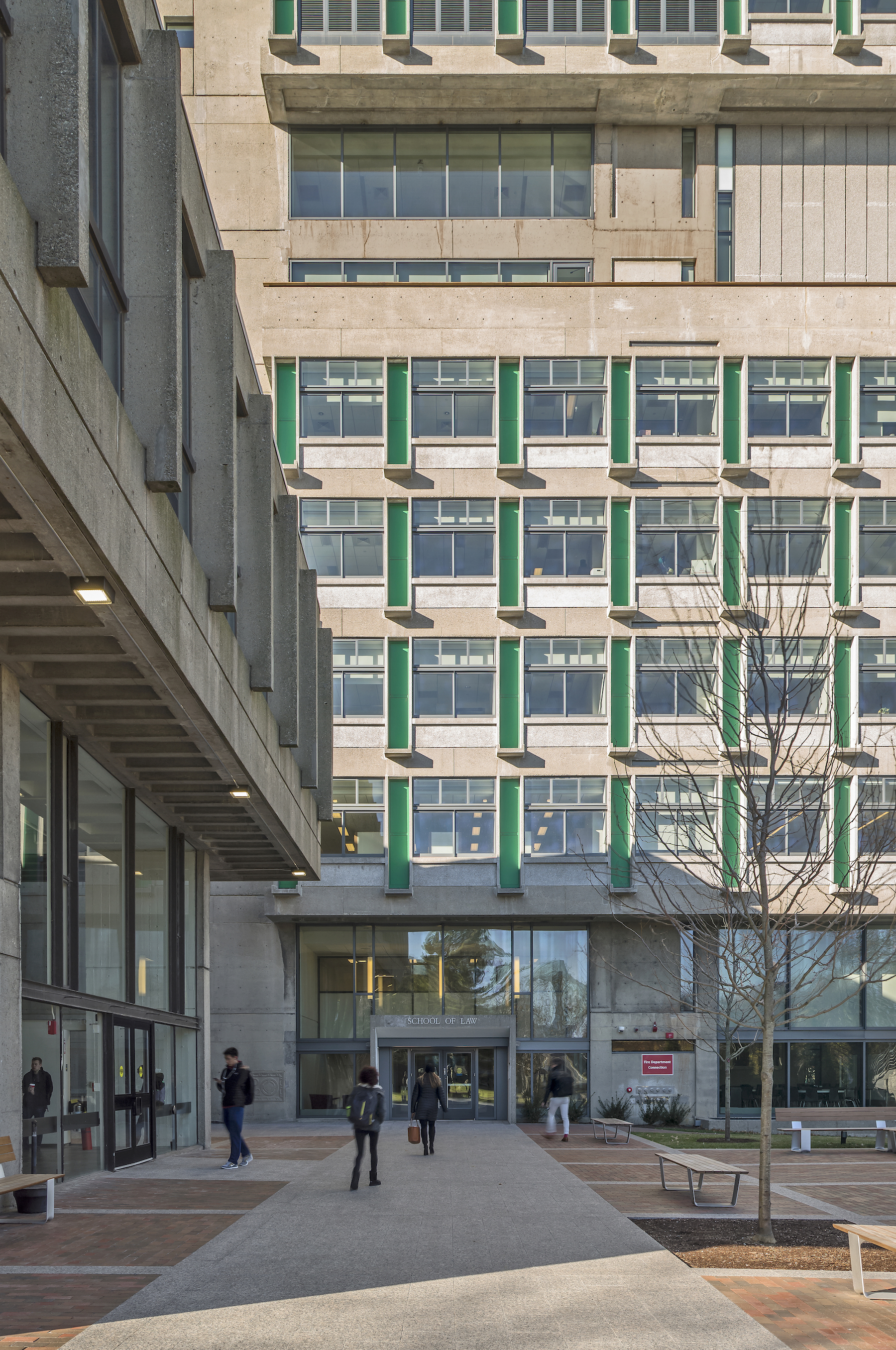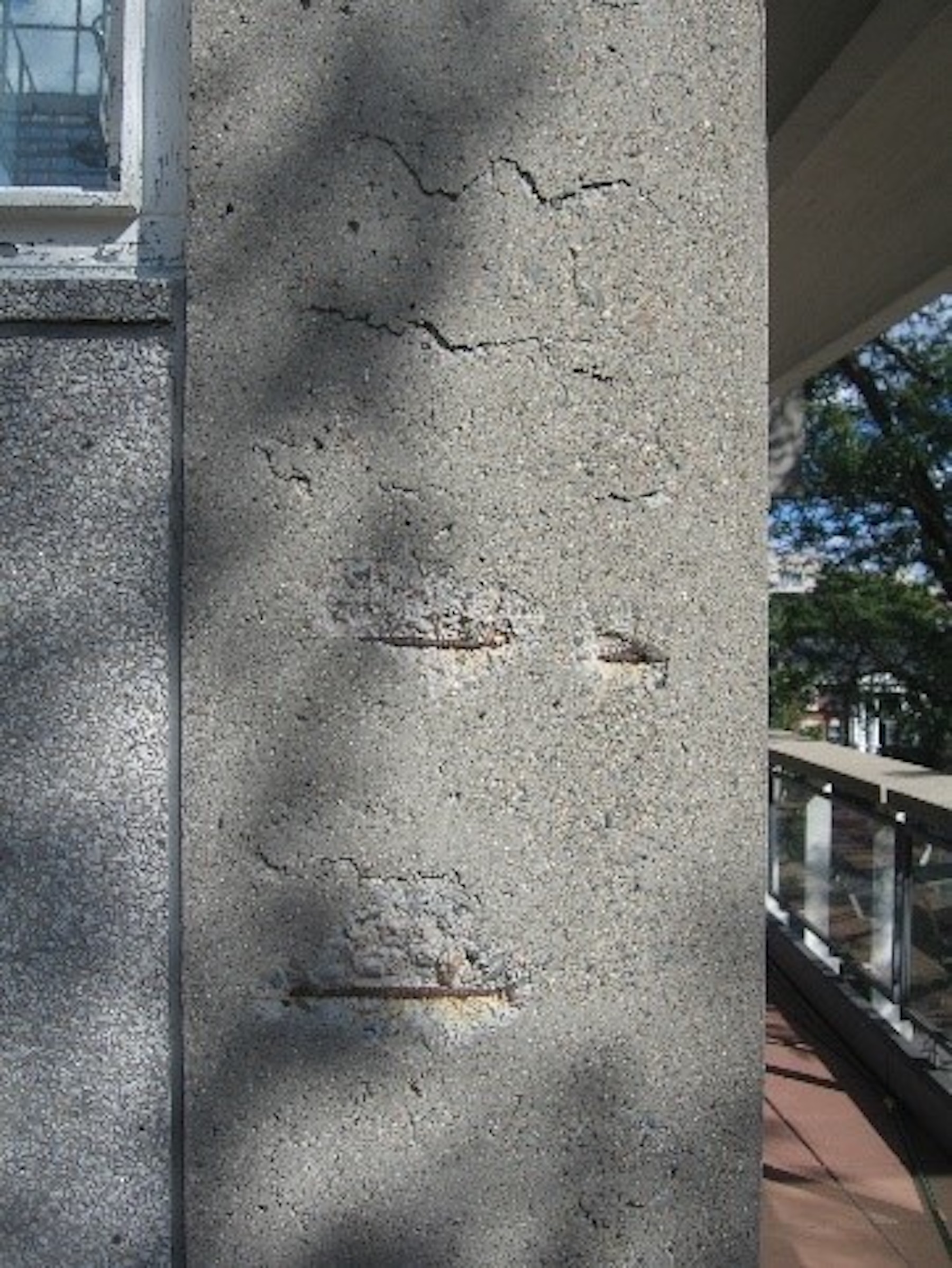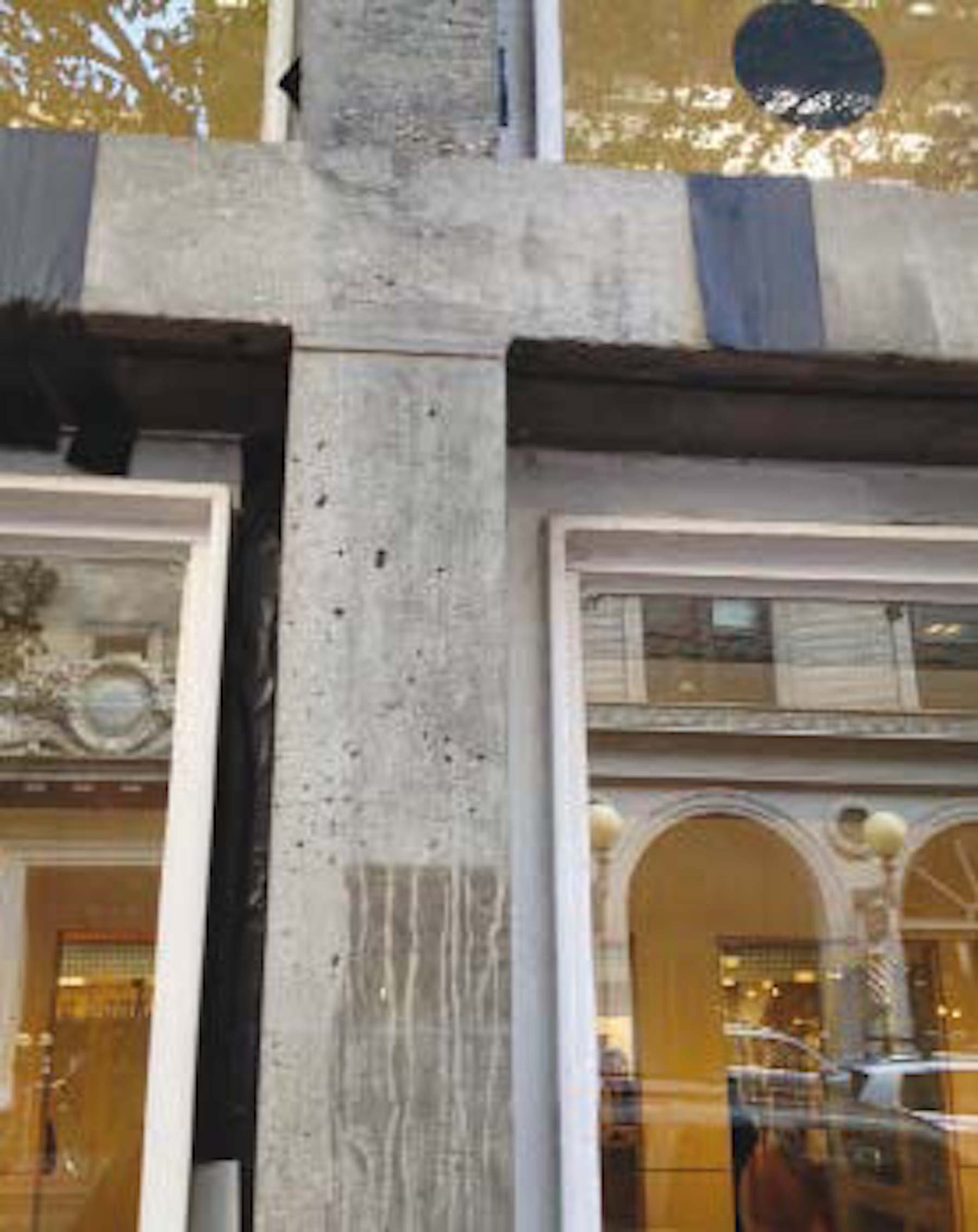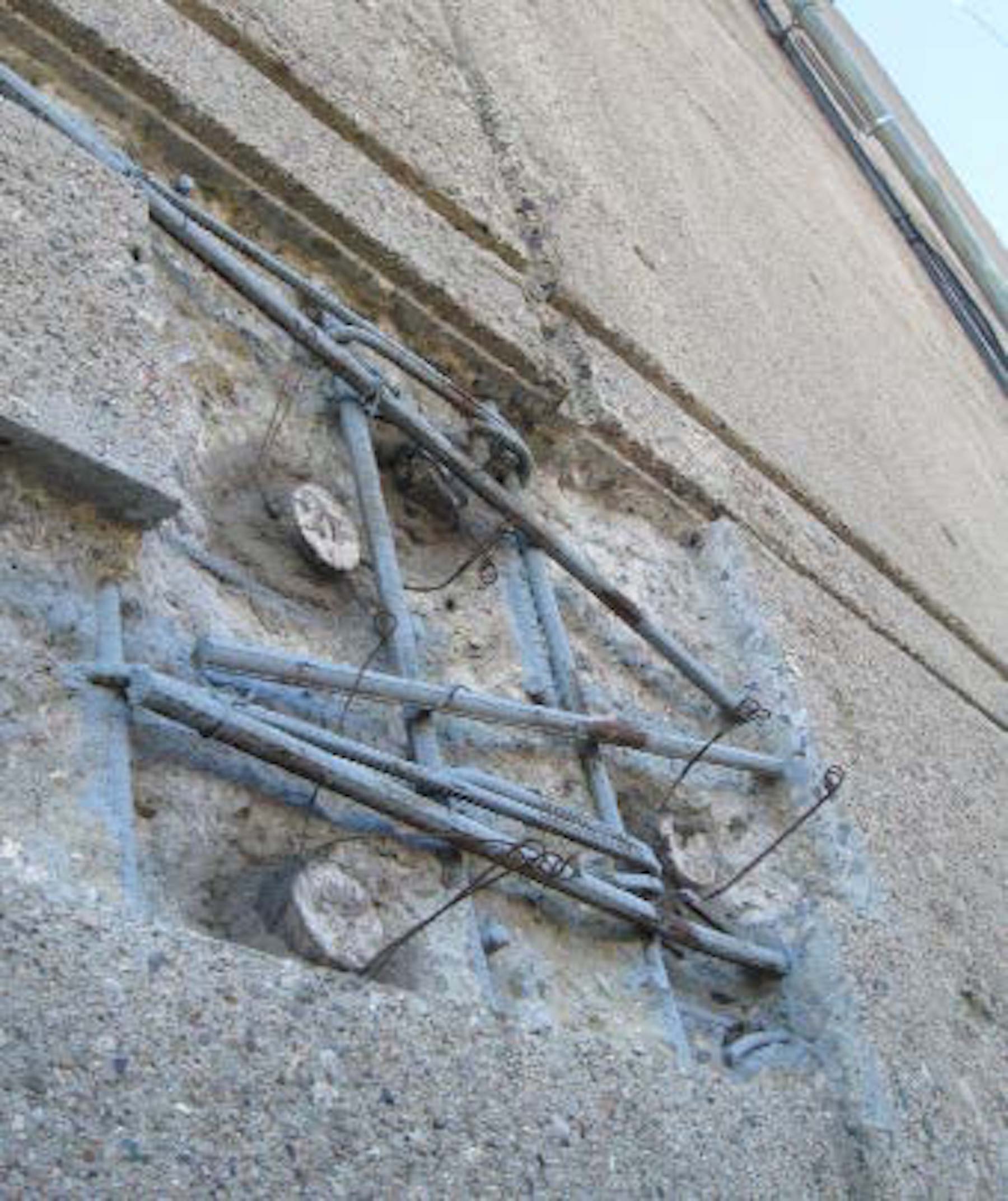Concrete buildings: Effective solutions for restorations and major repairs
The history of concrete construction between 1950 and 1970 offers architects and construction professionals a framework for how to rehabilitate these buildings today using both time-tested and emerging technologies.

Architectural concrete as we know it today was invented in the 19th century. It reached new heights in the U.S. after World War II when mid-century modernism was in vogue, following in the footsteps of a European aesthetic that expressed structure and permanent surfaces through this exposed material. Concrete was treated as a monolithic miracle, waterproof and structurally and visually versatile.
Construction techniques based on contractors’ experience with infrastructure introduced cast-in-place concrete combined with precast elements to replace natural stone on façades. Architects designed exposed concrete façades, cantilevered concrete balconies, and their associated slabs as if the material were uniformly waterproof, which it was not. Thermal conductivity was not addressed. No one discussed embodied carbon back then.
The history of concrete construction between 1950 and 1970 offers architects and construction professionals a framework for how to rehabilitate these buildings today using both time-tested and emerging technologies. Most exposed architectural concrete in the U.S. was in structures built by institutions, especially universities, which expanded rapidly after WWII.
Planning for these structures began in the 1950s, and the first wave of buildings was in place by 1965. Many were built with perimeter radiation for heating and without ducts for air conditioning. Comfort standards were less exacting then, and energy conservation was a minor concern.
Less extensive ducting and other service runs allowed lower ceiling heights. The spanning capacity of concrete slabs made it possible to avoid deep downstand beams compared to steel construction. These traits combined to enable concrete structures to gain an extra floor within a 10-story envelope compared to steel framing.

Slabs and beams were inherently fire resistant and could be left uncovered. Precast panels were typically formed off-site with close tolerances for coverage of steel reinforcement. Nevertheless, these buildings were vulnerable to the tests of time—decades of exposure to weather, changes in user requirements, and piecemeal adjustments for building codes.
Twentieth-century architecture based on monolithic concrete was a relatively short-lived movement in the U.S. due to public aversion to its nontraditional appearance, along with a growing realization that effective energy performance and moisture management necessitate separation between structure and cladding in a building envelope.
However, the problems posed by the best examples of historical concrete buildings are not insuperable, and they deserve solutions consistent with their provenance and aesthetic value.
An increasing number of architectural firms and associated engineers are now gaining extensive experience in this practice, renovating and restoring seminal structures designed by Paul Rudolph, Josep Lluis Sert, Eduardo Catalano, and other notable architects. Effective solutions are building upon this experience and continue to advance as more of these structures pass their 50th year in service and restoration replaces random repairs.
Primary Problems
As the 20th century drew to a close, the list of complications with mid-century concrete structures began to swell significantly, posing substantial maintenance and adaptive reuse challenges that often intersected with historic preservation guidelines. Sized visually, columns were compositional elements at both the exterior and interiors of many buildings.
Structural capacity was often determined by reinforcing steel that varied within columns of the same dimensions depending on loads at the time of construction. Interflooring and other load changes for proposed adaptive reuse projects frequently requires separate columns and new foundations where original columns appeared so sizeable that they could support additional floors or mezzanines.
The placement of rebar and ferrous metal supports was less precise in cast-in-place slabs and façade panels in the early period of concrete construction. Inadequate cover is the most frequent cause of spalls (often dangerous), as corrosion causes steel to laminate and expand. Steel rebar support “chairs” sometimes rest against formwork and produce rust stains on exposed surfaces.
Corrosion and poor consolidation of concrete at the bottom of vertical formwork cause cracking that admits moisture. Water penetration at cracks causes chemical changes that reduce the natural alkalinity of concrete surrounding steel that protects against corrosion.
Over time, the laitance of smooth concrete surfaces weathers away to allow more general moisture penetration, leading to oxidation as a slow change infiltrating the entire façade to remove alkalinity and further endanger steel rebars. Alkali-silica reaction is an additional complication that can cause extensive “map cracking” where the high alkalinity of the cement paste reacts with the amorphous silica found in many aggregates.
Prior to 1972, most sealants and caulking compounds contained a carcinogenic oil called polychlorinated biphenyl (PCB). PCBs frequently migrated into concrete at panel joints and around window openings. Its identification, removal, or containment can be a major commitment in terms of schedule and construction cost in the rehabilitation of these buildings.
Precon Planning
Diagnosis and repairs to deteriorated areas require greater investment in preconstruction access, in situ trials and mock-ups, and detailed cost estimates. Mid-century concrete buildings are often much larger than their predecessors of traditional construction. More occupants and longer construction schedules can make it more difficult to empty them during construction. Construction noise, hazmat containment, and privacy issues make advance logistical planning critical to occupants.
Concrete repairs intensify these problems as cutting and chipping to expose rebar at areas of spall and severe cracking are loud and introduce vibration. Less obviously, the sound of removing sealants around windows and noise of pumps for water or dry abrasives to clean exposed concrete can be as irritating as cutting and chipping for occupants and neighbors.
Field trials during preconstruction help to minimize complaints during construction that force changes to workers’ schedules. In some cases, clients have required work to proceed at night, when the building is unoccupied, or have limited it to weekends when masonry crews could not maintain workflow through the week according to the original project schedule.
Cleaning and Repair Tests
In addition to the importance of a thorough survey with vertical access for sufficient sample areas to predict the amount of spalling, crack repair, and hazmat sampling, preconstruction is likely to involve a succession of concrete cleaning and repair test areas and in situ samples. Patch specification may start with “puck” samples to compare mixes that have different paste and aggregate components. These may narrow the range of mixes to allow for in situ installations of the most promising candidates, but these typically involve six-inch-square insertions that need three or four weeks to cure for visual comparison.

The comparison of refinements among mixes may require multiple successive installations and take several months to complete. Surface treatment that matches patches to adjacent surfaces is a hand craft, and masons need to show that they can consistently achieve the right finish. Even when clean, 45-year-old concrete does not look brand new again.
Carbonation shifts tonality from gray to tan. Thin, brittle, cementitious laitance wears away to expose more aggregate, changing the concrete’s texture and hue. Wet methods may involve contaminated run-off and ticketed disposal. Masons demonstrate their ability to match original surface textures in situ and are pre-approved for each project.
Cracks and Coating
Crack repairs remain the most visually distracting category within concrete restoration. Minor indications of incipient fracture sometimes lead to applications of a penetrating liquid corrosion inhibitor. In many projects, all concrete is finally coated with a silane-siloxane water repellent to seal the material and slow carbonation.
Cleaning trials may involve delays for surfaces to dry, but site samples can be numerous as the chosen method may be affected by more than the final visual outcome. Dry abrasion may expose neighbors to wind-driven dust and particles. Issues may differ at individual façades and street frontages, so they should be settled during preconstruction to allow for competitive bids and realistic scheduling.
Structure and Steel
Structural repairs associated with architectural concrete are almost always associated with steel corrosion at places where water penetrates. Typically, rebars are too close to the exterior surface. Rust expansion causes cracks and incipient spalls. Full detachment of concrete spalls can pose a serious life safety threat to areas below. In these locations, concrete is cut away to expose the steel on all sides for coating with corrosion-resistant paint and with further removal to allow for insertion of a galvanic anode for passive cathodic protection and full coverage with new concrete.

Precast panels are often thinner than cast-in-place portions of façades, columns, and slab edges. Reinforcement may be accurately placed in terms of cover, but deflection and slight movement at anchorage locations can lead to cracks and entrances for rainwater. Even panels of narrow thickness can be fitted with sacrificial anodes to protect steel mesh reinforcement.
Cutting and chipping for patches to all surfaces whether cast-in-place or precast should be visually rectilinear, comparable to stone “dutchman” repairs. It is very difficult for patched concrete to match adjacent surfaces exactly, especially if the original is not cleaned. The “dutchman” approach minimizes the distraction of individual patches and tonal discrepancy with their neighboring surfaces.
Concrete’s Past, PRESENT, and Future
Concrete restoration is a complex area within architectural preservation and building renovation, yet the structural issues are seldom profound. Construction management and visual continuity between new and old are the primary challenges, but knowledge and experience that specifically apply to maintenance of exposed concrete are increasing as mid-century modern now passes into its sixth and seventh decades.
The advantages of reinforced concrete construction still exist today. Designers have become far more sophisticated in terms of engineering options, embodied carbon reduction, thermal breaks, and the logistics for concrete placement. Large concrete producers have about 1,500 mixes in their repertory with about 350 commonly specified for strength, cure rate, Portland cement content, cementitious substitutes (fly ash and slag cement), water resistance, and aggregate.
Architects seldom specify exact concrete mixes for their projects but increasingly encourage structural engineers to set performance standards including carbon content and to require Environmental Product Declarations (EPD) to confirm compliance.
Architects are more aware of the life cycle assessment basis of EPDs and can encourage engineers to pursue less carbon-intensive mixes without dictating how producers achieve the appropriate mix. Designers are also more conscious of the volume and tonnage of concrete inherent in their layout of columns and management of slab thickness. In contrast to new construction, these issues are minor in concrete restoration, but embodied carbon in existing concrete structures contributes enormously to the life cycle assessment downside of their replacement.
About the Author
Henry Moss, AIA, LEED AP, is expert in rethinking existing buildings to create new places. He has a distinguished career in historic preservation and adaptive reuse. Recipient of the 2015 Boston Preservation Alliance Codman Award for Lifetime Achievement in Preservation, Moss is a founding member of the DOCOMOMO New England chapter, and has led technical preservation workshops for the Boston Society of Architects for more than 25 years. Bruner/Cott’s work with mid-century modern structures includes Josep Lluis Sert’s Boston University School of Law and Harvard’s Smith Campus Center, Paul Rudolph’s UMass Dartmouth, and Eduardo Catalano’s Student Center at MIT.







